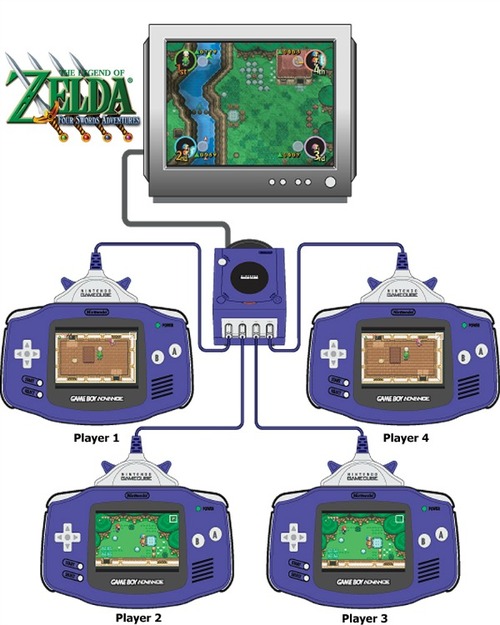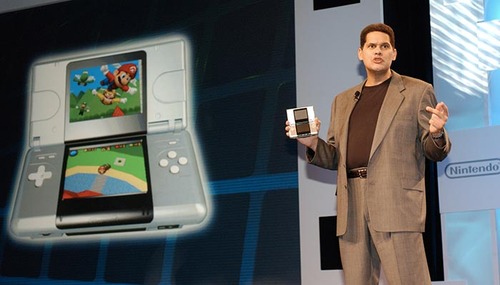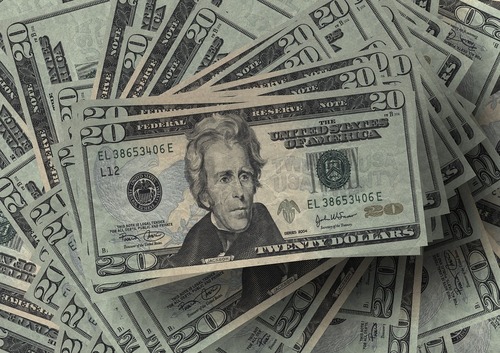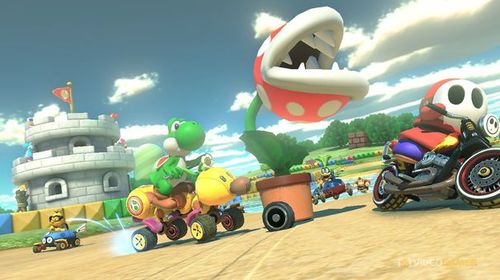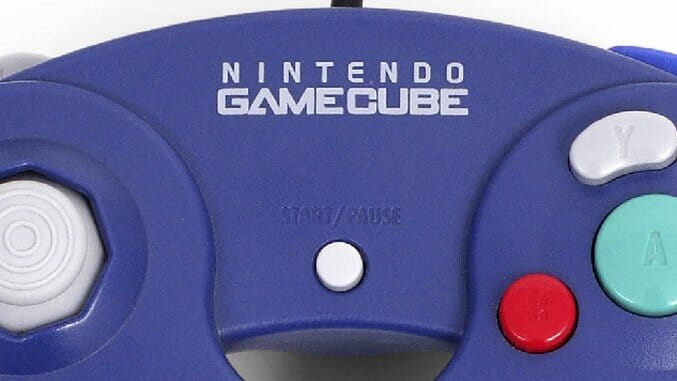
For many who love Nintendo, the past console generation has been a jading ordeal. Three and a half years into its life and the Wii U is ready for retirement. Much has already been written about the tablet-controlled console’s struggles, in editorials and Youtube comments alike, but the numbers speak for themselves. With only 12.8 million units sold worldwide, the system is Nintendo’s biggest hardware flop since the VR-challenged Virtual Boy.
Recent headlines haven’t prescribe an easy tonic. Weeks ago, Nintendo announced plans for a limited E3 exhibition in June, at a time when it desperately needs to drum up excitement for its products. Around the same time, a confirmed 2017 release date for the Nintendo NX disappointed gamers who expected to own one by the end of the year. And yet, as dire as the situation looks, the beloved and beleaguered company is capable of turning its fortunes around. Surprisingly, charting this bright future could plausibly begin with the lessons of a relic from Nintendo’s past: the GameCube.
In many ways, the GameCube mirrors the Wii U’s current predicament. Not long ago, the underdog purple block was considered a low point in Nintendo’s history. Sometimes ridiculed as a toy lunchbox and rightly criticized for its lack of online features, it not only ceded ground to Sony’s PlayStation 2 juggernaut, but to an upstart newcomer called the Xbox. And yet, the GameCube sold considerably better than the Wii U, topping at around 21.7 million units. Many of its games are also still widely admired today. These favorable conditions helped Nintendo overcome and survive the GameCube’s weaknesses, allowing it to go on to dominate sales charts with the Wii. If the Nintendo NX also wants to rise to the occasion, there’s much it could learn from its cubic great grandparent.
Make Us Care about Unique Features
Of all the rumors surrounding the Nintendo NX, the most persistent of them contends that the system is some kind of console-handheld hybrid. If true, it would not be the first time Nintendo attempted to marry a home console with its lucrative portable business. Early in the GameCube’s lifespan, Nintendo introduced link cables that let players connect their Game Boy Advance handhelds to the system’s controller ports. The potential was there for synergetic gameplay shared between the two platforms.
Ultimately, the connectivity experiment never truly registered with gamers, largely due to Nintendo failing to make a good case for its usefulness. Only the four-player The Legend of Zelda: Four Swords Adventures took full advantage of the feature to give each player a second screen. Otherwise the cables were only used for forgettable diversions, like visiting a boring island in Animal Crossing. In many games it simply served as a gate key to unlock unrelated content.
In some ways, the failure of connectivity was an omen for Nintendo’s Wii U woes. Not many consumers saw the potential for a touchscreen controller that would give them a second screen to play console games. Whatever form Nintendo’s next hardware takes, it will need to make a better effort to sell its unique features. If those include a hybrid design, then that’s cool. But make people care with meaningful gameplay, convenience or novelty. That’s basically what Nintendo did with the Wii’s motion controls: engineer a popular fad and make a stupid amount of money.
Go Big With PR
Legendary gaming memories were born when Nintendo took the E3 stage in 2004. “My name is Reggie, I’m about kicking ass, I’m about taking names, and we’re about making games,” Nintendo of America President Reggie Fils-Aimé declared in a mic drop-worthy introduction. From there, the press conference spotlighted a powerhouse list of GameCube releases — ranging from Metroid Prime 2: Echoes to Resident Evil 4 — and unveiled the Nintendo DS. Then the trailer for what became The Legend of Zelda: Twilight Princess charged onto the screen. And yes, the audience hollered with joy. It was a formidable showing from Nintendo at a time when it needed a fiery pitch.
Nowadays such a spectacle would appear almost foreign to Nintendo’s public relation efforts. Since 2013, the house of Mario has skipped traditional E3 press conferences in favor of streaming Nintendo Direct events online. More often than not, these miniature preview videos have been compact, frequent, informative, and altogether charming. No doubt, they also saved costs at a time when the Wii U was likely doomed no matter what marketing magic Nintendo conjured. But now it’s time to go big again. Nurturing the Nintendo NX will take mainstream exposure and media buzz. You don’t skimp on PR when it’s critical to win back respect from a wider audience. A return to the E3 conference stage in 2017 would signal that it’s time to treat Nintendo like a serious contender again.
Find the Right Price Early
Nintendo arguably saved the 3DS by cutting its price tag only a few months after it launched in 2011. Late Nintendo President Satoru Iwata was frank when explaining the price drop to investors. Part of the reason for the speedy markdown was to benefit from lessons learned from the GameCube, he explained, which didn’t decrease in price until more than two years after it hit stores. For many at Nintendo, that had been a missed opportunity. An earlier price drop might have helped the console recover from a sluggish launch.
Eventually, Nintendo did slash the GameCube’s price to a frugal $99. For both it and the 3DS, the adjustments paid off, boosting sales and install bases. Still, with its new hardware, Nintendo would be better off calibrating a competitive price from the start to avoid needing to make such desperate moves. Though Nintendo President Tatsumi Kimishima recently said there is little interest in selling the Nintendo NX at a loss for each unit sold, balancing profits and affordability should still be a priority. Gamers will respond to a good deal.
Finally dropping the Wii U’s price wouldn’t hurt either.
Give Developers the Specs They Need
By now it almost goes without saying, but Nintendo has a problem attracting third party developers. Early on companies like Ubisoft mustered cautious support for the Wii U’s software library with ports and exclusives — remember ZombiU? Poor sales scared them off in the end, which put the burden on Nintendo to supply games to its user base. No single company can adequately support a console on its own, and the Wii U faced long dry spells between major releases as a result. Last year that list was limited to Splatoon, Super Mario Maker, Yoshi’s Woolly World and Xenoblade Chronicles X — a quality menu, but not extensive enough to cater to every Wii U owner’s personal taste.
Past Nintendo platforms had problems courting developers too, but not to this extent. Graphically, the GameCube was largely on par with its competitors, helping it support the ambitions of third party teams. That meant it could nab exclusives like the Resident Evil remake and Star Wars: Rogue Squadron II, and offer cross-platform titles like the Madden NFL series. As much as Nintendo doesn’t want to compete on pure graphical power, it can’t ignore modern gaming’s technical requirements.
Again, it’s important to keep manufacturing costs under control. With that in mind, Nintendo should carefully consider how to close the technology gap between it and the other major consoles manufactures. The Nintendo NX doesn’t need to be a futuristic powerhouse. It definitely doesn’t need to dabble in VR either. At least, not yet. Adopting a technology still in its infancy would prove far too risky and expensive for a home console business trying to get its act together. But the Nintendo NX’s specs should be respectable. Don’t make it another poster child for dated technology.
Lesson # Obvious: Keep Making Great Games
All of the above lessons will do the Nintendo NX no good if there aren’t any games on it worth playing. Without a doubt, games are where the GameCube truly shined. Creative minds reimagined beloved franchises without sacrificing their original charm. Super Mario Sunshine and The Legend of Zelda: The Wind Waker each brought interesting twists to the classic Mario and Zelda formulas, and Retro Studios pulled off the impossible task of translating Samus Aran’s 2D space adventures to 3D with Metroid Prime. The GameCube also spawned the brilliant (from a financial point of view, at least) idea of releasing a new Zelda game on both current-gen and next-gen platforms, a trump card Nintendo already plans to copy for its next system.
Quality first-party games were the Wii U’s greatest strength, and it should be praised for bringing gamers the inventive fun of Splatoon, the gleeful fan service of Hyrule Warriors, the surprise rescue of Bayonetta 2, and superb iterations of Mario Kart and Super Smash Bros. As long as Nintendo can translate this track record to the Nintendo NX and avoid stumbling blocks, fans will at least have a strong slate of software to look forward to. Just make sure there are enough games in the pipeline to launch the Nintendo NX with a strong lineup. After all, the GameCube proved, if anything, that love for Nintendo’s games can withstand the greatest of Nintendo’s blunders.
Parker Lemke is a writer from Minnesotan who has spent far too much time modding The Elder Scrolls III: Morrowind. He served in the journalistic trenches of his college newspaper and once interned at a place called Game Informer. You can follow him on Twitter.
